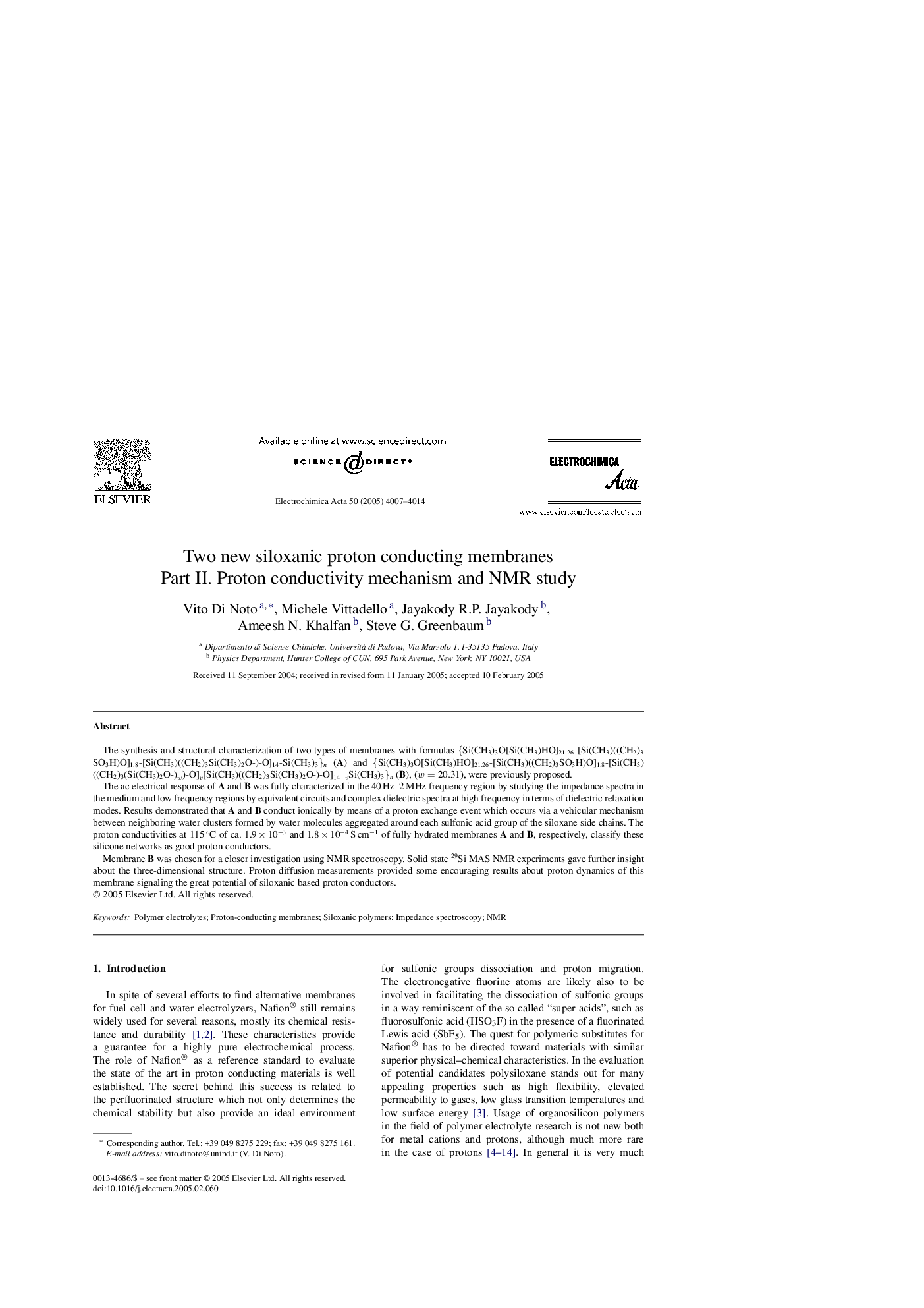| Article ID | Journal | Published Year | Pages | File Type |
|---|---|---|---|---|
| 195990 | Electrochimica Acta | 2005 | 8 Pages |
The synthesis and structural characterization of two types of membranes with formulas {Si(CH3)3O[Si(CH3)HO]21.26-[Si(CH3)((CH2)3SO3H)O]1.8-[Si(CH3)((CH2)3Si(CH3)2O-)-O]14-Si(CH3)3}n (A) and {Si(CH3)3O[Si(CH3)HO]21.26-[Si(CH3)((CH2)3SO3H)O]1.8-[Si(CH3)((CH2)3(Si(CH3)2O-)w)w)-O]v]v[Si(CH3)((CH2)3Si(CH3)2O-)-O]14−v]14−vSi(CH3)3}n (B), (w=20.31w=20.31), were previously proposed.The ac electrical response of A and B was fully characterized in the 40 Hz–2 MHz frequency region by studying the impedance spectra in the medium and low frequency regions by equivalent circuits and complex dielectric spectra at high frequency in terms of dielectric relaxation modes. Results demonstrated that A and B conduct ionically by means of a proton exchange event which occurs via a vehicular mechanism between neighboring water clusters formed by water molecules aggregated around each sulfonic acid group of the siloxane side chains. The proton conductivities at 115 °C of ca. 1.9 × 10−3 and 1.8 × 10−4 S cm−1 of fully hydrated membranes A and B, respectively, classify these silicone networks as good proton conductors.Membrane B was chosen for a closer investigation using NMR spectroscopy. Solid state 29Si MAS NMR experiments gave further insight about the three-dimensional structure. Proton diffusion measurements provided some encouraging results about proton dynamics of this membrane signaling the great potential of siloxanic based proton conductors.
